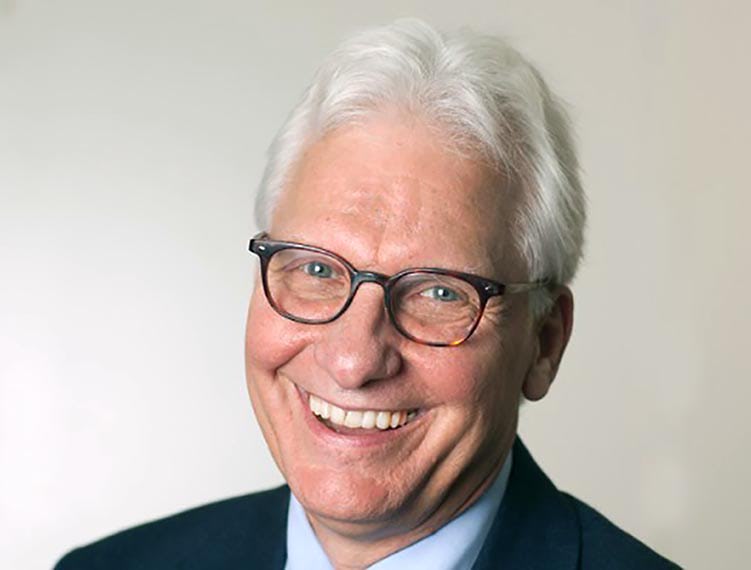A better understanding of motivation is the key to a happier, and more productive, workplace

Professor Richard Ryan, one of the world’s leading researchers on human motivation and the co-developer of Self-Determination Theory (SDT), believes the secret to a happier and more engaged workforce lies in understanding what really motivates us.
Why does motivation matter in the workplace?
Simply put, fostering a culture where employees have clear career goals – and are motivated to achieve those goals – is critical for any company to retain and attract great talent. Employees are holding their employers to a higher standard, and if they don’t feel valued in their place of work or feel their career growth is being stunted, the outcome is predictable: they will leave.
And indeed they are leaving: One survey found a third of people quit their jobs because they weren’t learning new skills and didn’t feel like their employer was helping them to progress within the company.
Missing Millions: UK is overlooking the #UntappedPotential of millions of workers: Undertrained, underemployed and unprepared: the UK is squandering the potential of millions of workers A new report Missing Millions published today (25 Feb) by leading… https://t.co/UoFx8TuWf1 pic.twitter.com/IjbDrk8BSu
— FE News – The #FutureofEducation News Channel (@FENews) February 25, 2020
Understanding what motivates people, what really inspires us to leap out of bed in the morning, is fundamental to building a productive culture that employees really want to be a part of and to bringing out people’s best work.
So, what does motivate us at work?
What motivates us at work is fundamentally the same as what motivates us in most every other realm of our lives. Science tells us that motivating ourselves or others through external factors such as the threat of punishment or even the promise of a reward (i.e. the old carrot and stick tactic) is rarely effective or long-lasting.
But finding interest, meaning or value in what we’re doing–whether that’s starting a new exercise routine or a new job–is far more powerful in cultivating lasting commitment, wellbeing, and satisfaction.
The idea of supporting such internal motivation is at the core of Self-Determination Theory (SDT).
Building a workplace culture that really motivates employees
SDT can really be broken down into three basic needs that drive our intrinsic motivation and sense of willingness to put our best into our work:
- Competence
- Autonomy, and
- Relatedness.
Companies must strive to hit all three if they want to create a culture where employees feel valued and fulfilled.
Competence essentially boils down to feeling good at what we do – I think it’s fair to say we all want to feel effective in our jobs. We like to use our skills to make a contribution that feels meaningful and valued.
Relatedness refers to our need to feel connected to others around us, but this is balanced with our desire for autonomy – having a sense of ownership and control over both our day-to-day activities and our long-term career path.
Building a culture that taps into these intrinsic motivations
Especially as a cofounder of MotivationWorks Inc., a company that consults on fostering employee engagement, I’ve had the opportunity to work with a lot of human resource managers, so I appreciate that creating a culture around the idea of intrinsic motivation can be daunting–and it’s certainly a big switch from management approaches of the past.
But I think a good place to start is just with compassion. Good leaders will listen to their employees, understand their viewpoint and have faith that they will do a great job if they’re just given the right conditions to do so.
Of course, every company has certain targets it needs to hit, but it’s important to remember that people aren’t machines–we aren’t motivated by KPIs. We need to feel like we’re working towards something meaningful and to understand why what we’re doing actually matters.
Having a strong company vision can help with that because it gives employees something to rally around, a shared goal that everyone in the company is pulling together to achieve–that sense of relatedness. It’s important that an organization’s goals aren’t just experienced as a set of top-down mandates.
It’s about encouraging commitment, not forcing compliance. That’s why managers have a responsibility to maintain an open dialogue within their own team, ensuring that every individual understands why certain demands are being made of them, listening to concerns when they arise, and showing a willingness to compromise whenever possible. Employees should never feel like they’re just another cog lost in the corporate wheel.
Should companies banish the ‘carrot and the stick’ tactic altogether? Shouldn’t employees be rewarded for good work?
It almost goes without saying that people want to be paid well and rewarded for the work they’re doing. But actually, when you examine the reason behind that, it’s often because we feel the amount that we’re paid is a direct indication of how much we’re valued by our employer.
If we’re paid well, it tells us that our work is being recognized and that we matter to the company. But many companies now also offer their employees perks and benefits–like a free gym membership–and those generally fall under that extrinsic motivation category. Am I saying companies shouldn’t use incentive systems? Not at all, they’re still a part of motivational design. But they do need to be leveraged in the right way so they’re not undermining people’s intrinsic motivation and commitment.
Rewards can really become an issue when they are too outcome-focused. That’s when they stop feeling supportive and start being experienced as another form of external control. The most common example of this is performance-related bonuses offered to employees when they achieve certain KPIs.
These can actually be very corrupting in a company because it encourages people to only focus on what they’re getting rewarded for and can even lead people to cheat or cut corners just to reach that end goal as fast as possible. It can also create a pretty unhealthy environment within teams, particularly if these rewards appear to be inequitable.
When considering compensation systems, my advice to companies is that they think about what message the rewards are sending to their employees.
One thing we have discovered, however, is that when employees are dissatisfied with their compensation, it’s not always about the money. It’s often a reflection of frustrations of autonomy, competence or relatedness on the job. When they are liking their work, compensation becomes less of a focus.
What do good rewards look like?
Consider rewards that offer opportunities for greater intrinsic satisfaction.
For example, offering employees access to a range of career development tools, like online training or coaching sessions, that enable them to learn new skills and shape their career path.
Also, rewards work best when they are perceived as fair and commensurate with one’s contributions. A sense of inequity can undermine loyalty. Finally, good compensation packages also consider the whole of a person’s contributions (rather than just a narrow set of outcomes). They increase a person’s sense of being truly valued and appreciated for all their efforts.
Dr. Richard Ryan is Professor Emeritus in Psychology at the University of Rochester, a Professor at the Institute for Positive Psychology & Education at the Australian Catholic University, and co-founder of MotivationWorks, Inc. He’s also the co-developer of Self-Determination Theory, one of the leading theories of human motivation.
Find out more about SDT and different strategies and styles for better motivation by enrolling in Dr. Ryan’s free online course available on Coursera here.











Responses